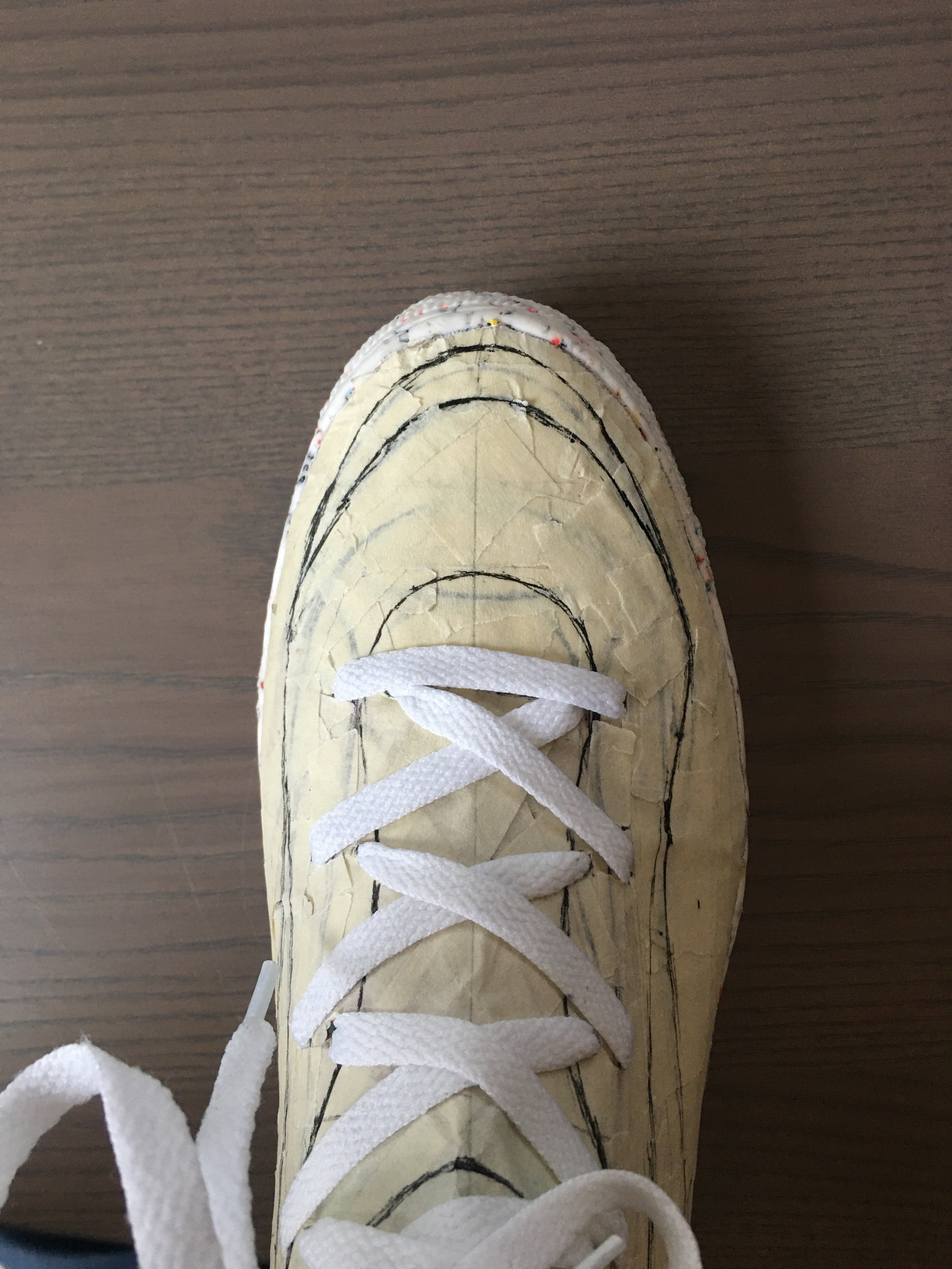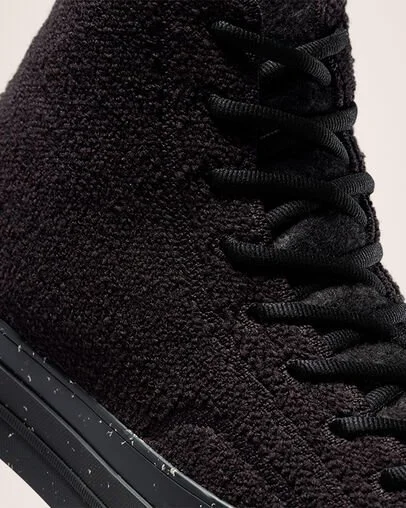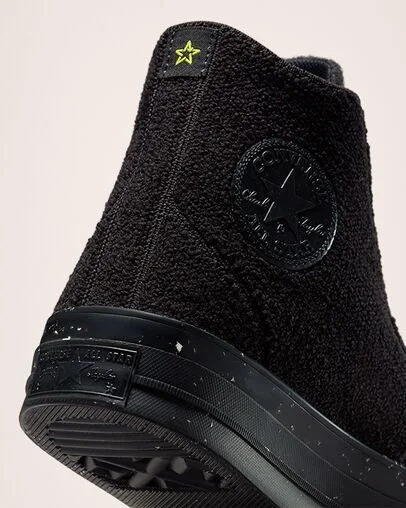For a third and final installment of the Renew Knit pack, and personally my favorite—the pack was brought forward into Holiday with a few shifts. A new model was added into the assortment which had been in pre development with the purpose of Introducing new aesthetics and depth into the upper. More last minute shifts pivoted the red model shown - originally slated for fall… into holiday - posing new challenges under tighter than anticipated deadlines. Adding in new structures at this point in the process - especially in the area of terry can add significant time per unit, and therefore cost to the engineered upper. This required several rounds of iterations to perfect, and was really inspired by experimentations I had done elsewhere utilizing engineered terry placed graphics via a woven technique. The patches were also adjusted to nod to durability and weatherization while color would be the final driver to bring home the seasonal aesthetic. This work is a further development of the work found here and here, and merged with the CT70 Knit to create a cohesive pack
An idea began to emerge for me based on the sustainability-forward basis for the pack, and the visual concept of fitting organic patterns and forms into this low resolution technology (flatbed knitting) or vice vera. This conjured ideas or the rigidity of the creation of the built environment merging with the organic flowing forms of nature.
Previous model to be updated
General Mood
Material mood (woven samples for inspo only)
To drive my organic form inspiration I looked to the unfurling of many plants, but my new white bird of paradise leaf took the cake. Once ready, in anywhere from a few days to a month the hydraulic pressure within the leaf will cause it to unravel from it’s original spear-like growth out of the center of the plant. This process leaves interesting patterns on the new leaf as it matures, as well as created an interesting visual in my mind when overlayed. This combination lead to the pattern development along with the structure choice and placement shown below.
I had been experimenting with various methods of producing terry to validate different parameters such as pile height, density, color, and engineered placement/graphic execution. This was a larger part of the utilization of terry in the final Crater Chuck model.


































